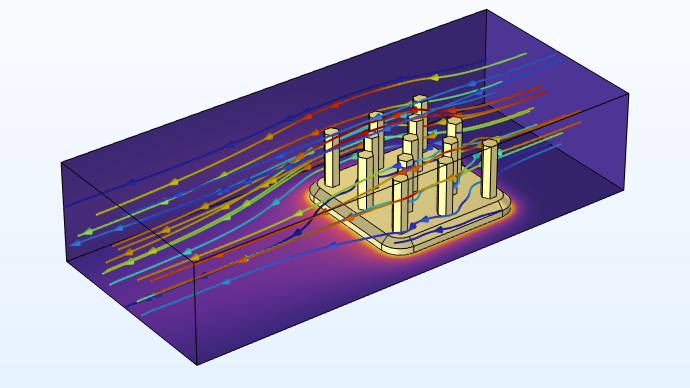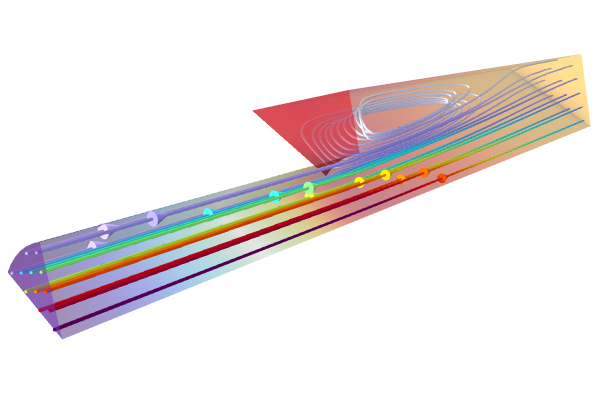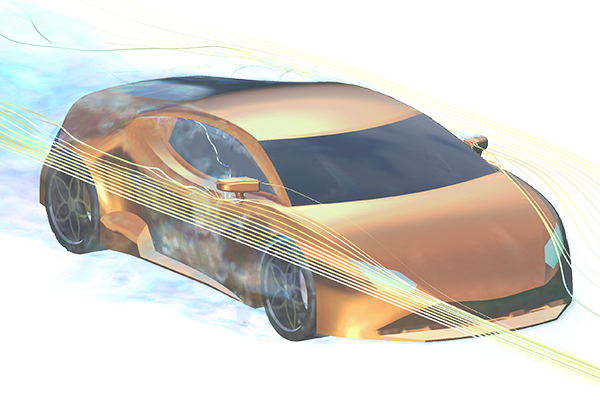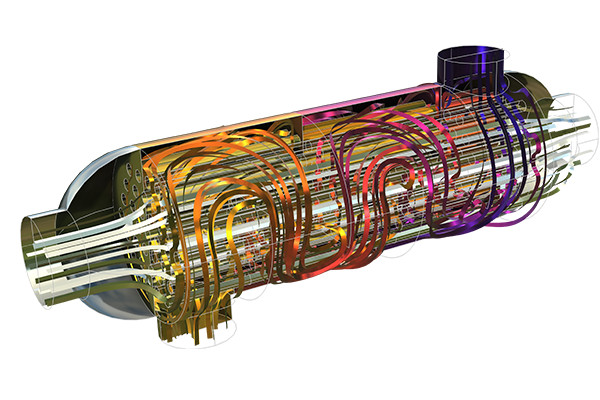Getting Started with Modeling Computational Fluid Dynamics
This course provides an introduction to modeling computational fluid dynamics (CFD) using the COMSOL Multiphysics® software and its add-on CFD Module. Through detailed guidance, you will learn how to set up, build, and compute models of various types of fluid flow. This includes single-phase laminar, turbulent, and nonisothermal flow. Each course part begins with a discussion on the fundamentals of modeling each type of flow, including an overview of the flow characteristics. You can then follow along with the step-by-step demonstrations that are completed in the COMSOL® software. Model files are included in each part of the course, so you can access the completed model built during the step-by-step segments. Modeling exercises are also included, enabling you to put into practice what you learn in each part of the course.

A model of a heat sink, built in Part 3 of the course.
An overview of the topics covered in each part of the course is outlined below:
Part 1: Basics of Modeling Laminar Flow in COMSOL Multiphysics
- Fundamentals of fluid flow modeling
- Overview of modeling single-phase laminar flow
- Setting up, building, and computing a laminar flow model
Part 2: Basics of Modeling Turbulent Flow in COMSOL Multiphysics
- Fundamentals of modeling turbulent flow
- Overview of turbulence models
- Setting up, building, and computing a turbulent flow model
Part 3: Introduction to Conjugate Heat Transfer Modeling
- Fundamentals of conjugate heat transfer modeling
- Setting up, building, and computing a model of natural convection in a cavity
- Conjugate heat transfer with laminar flow
- Conjugate heat transfer with turbulent flow
Upon completing the course, you will have a thorough understanding of the fundamentals of modeling single-phase laminar and turbulent flows as well as conjugate heat transfer in COMSOL Multiphysics. You will be familiar with the relevant fluid flow interfaces, boundary conditions, and features for these applications. Additionally, you will have a better understanding of the various turbulence models and strategies for effectively and efficiently setting up and computing the models.
请提交与此页面相关的反馈,或点击此处联系技术支持。




